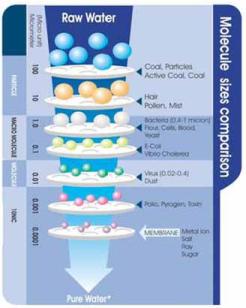About Recycled Water
West Basin is diversifying the water supply portfolio designed to shift our future water supplies to more locally-controlled and reliable sources of water. Nothing is more reliable and sustainable for the planet than recycled water. West Basin’s water recycling program produces five types of customer tailored waters to specifically meet our customers’ needs.
- Irrigation Water: Sewer water that has been filtered twice and disinfected a third time for industrial and irrigation use.
- Cooling Tower Water: Sewer water that has been processed to remove ammonia for industrial cooling tower use.
- Seawater Barrier and Groundwater Replenishment Water: Sewer water filtered by microfiltration and reverse osmosis membranes and disinfected for use in maintaining a barrier against seawater intrusion and augmenting local well water supplies.
- Low-Pressure Boiler Feed Water: Sewer water filtered by microfiltration and reverse osmosis membranes for use as low pressure boiler feed water.
- High-Pressure Boiler Feed Water: Sewer water filtered by microfiltration membranes and passed through reverse osmosis membranes twice for use as feed water for high pressure boilers.
The right water for the right use. Water recycling is a major pillar of our water reliability goals.
Recycled Water Treatment Process
As the population grew, nature alone was unable to meet the ever-growing demand for fresh water. With modern technological advancements and extensive research, however, we have learned how to mimic this natural process of cleaning water and to do it at a much faster rate. Water recycling employs the same principle as the hydrologic cycle but with vastly greater efficiency, and results in a much purer end product. At West Basin, we perform advanced water treatments that exceed state and federal drinking water standards. Microfiltration and reverse osmosis are the most advanced phases of water treatment, and the final product is as pure as the bottled water you buy at your local supermarket.
The process begins with a multistep process that mimics nature’s purification process.
See animated process here.
Phase 1: The first phase, or primary treatment, begins when wastewater reaches the sewage treatment plant where solids are removed from the water much as nature does in streams and rivers. Then tiny dirt-loving micro-organisms, like those found naturally in rivers and other bodies of water are added. They eat particles that are too small to see or too light to settle. Once they get full and heavy, they fall to the bottom and cleaner water rises to the surface. Then, during tertiary treatment, the water goes through a filtration process where the water percolates through layers of fine anthracite coal, sand and gravel much as natural underground seepage occurring in aquifers. In addition, disinfectants such as chlorine are added to kill germs. At this point, the water is ready for use in landscape irrigation and various industrial and commercial uses.

Phase 2: But before it is ready to drink, we take nature’s purification even further. In a microfiltration process, water is pressurized through pipes containing straw-like fibers with pores that are 5,000 times smaller than a pinhole. Even though this is equal to the water quality enjoyed by our ancestors, we don’t stop there. We eliminate virtually all impurities though a process called reverse osmosis.
Phase 3: In reverse osmosis, water is pressurized at about 200 pounds per square inch (equivalent to 200 lbs. pressing on every square inch of your body) through tightly wound layers of membranes with pores that are 5 million times smaller than a pinhole! To date, reverse osmosis is the most advanced filtration process, surpassing even the Earth’s miraculous natural ability.
Water recycling is a proven natural process that has been occurring for billions of years, and today, we have been able to replicate this cycle and even improve on it to produce the safest and highest quality water available anywhere.
Why Recycle Water?
Although 75% of Earth is covered by water, only 1% of that is freshwater available for serving the water needs of more than 6.6 billion people in the world today. Because of drought and pollution, that 1% is dwindling. To make matters worse, the world population continues to grow, further increasing the demand for water. Now, to bring it closer to home, in Southern California, more than 66% of our water supply is imported from outside the region.
During the next 15 years, California must reduce its imported water supply by nearly 1 million acre-feet (one acre-foot equals 326,000 gallons), but our population continues to rise. As the available water supply is decreasing, the demand for water is increasing. To ensure that we have enough water to meet our present and future needs, we need to conserve water and expand the use of recycled water.
In essence, by expanding the use of recycled water, we are actually helping to conserve our drinking water supplies.
There’s also an added big bonus. Recycled water is good for the environment. Without recycling, secondary treated sewage water would be discharged directly into our oceans – affecting the marine life. By recycling, less water is discharged, improving the environmental condition of our coastal waters.

